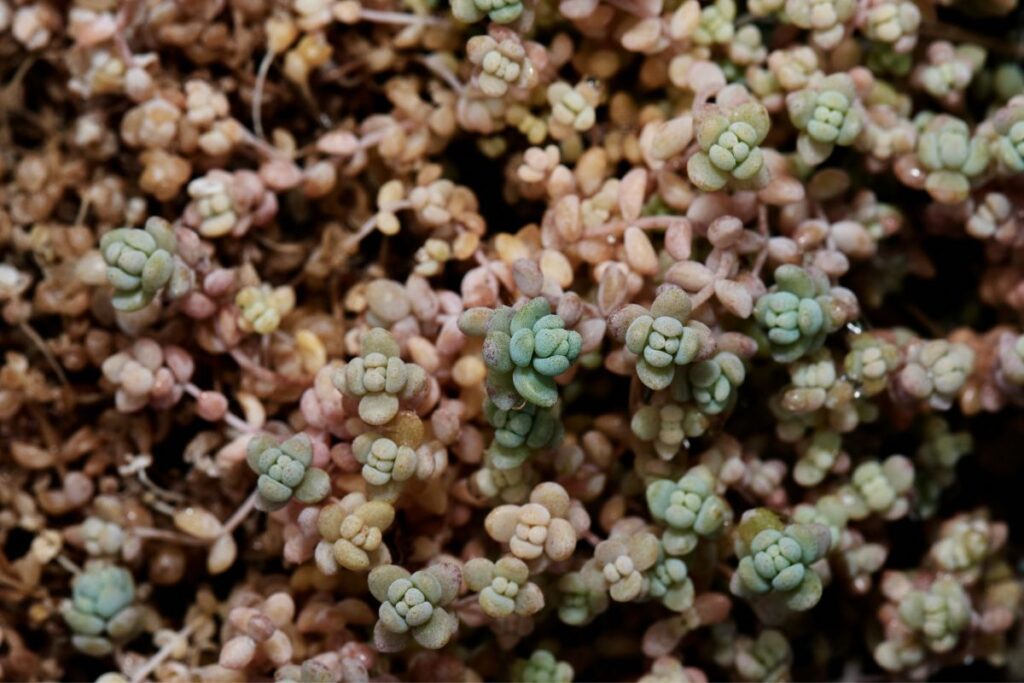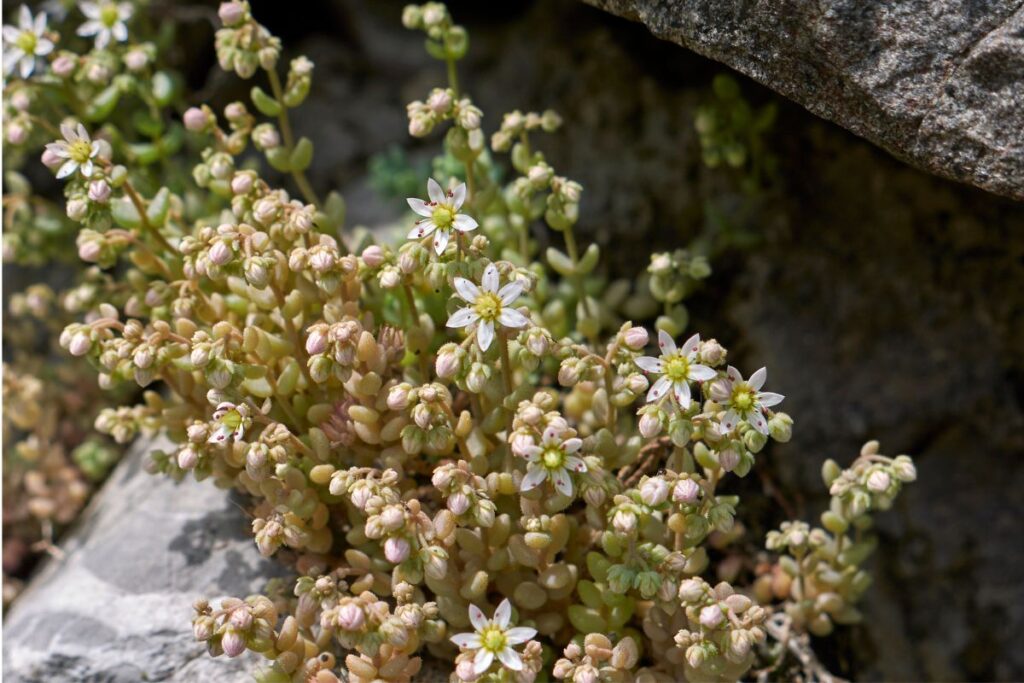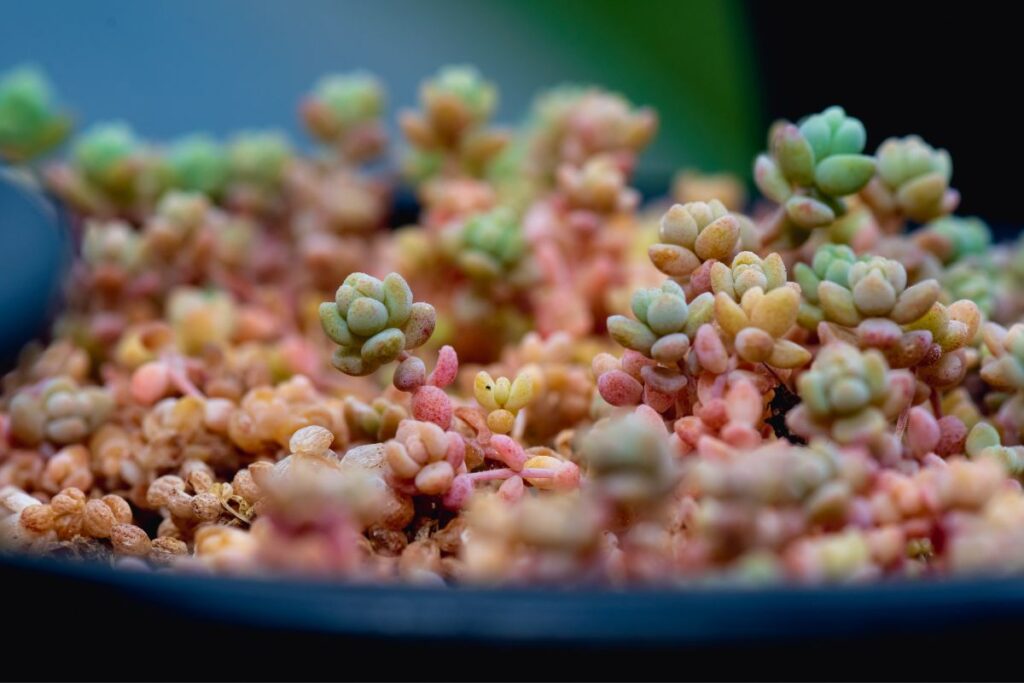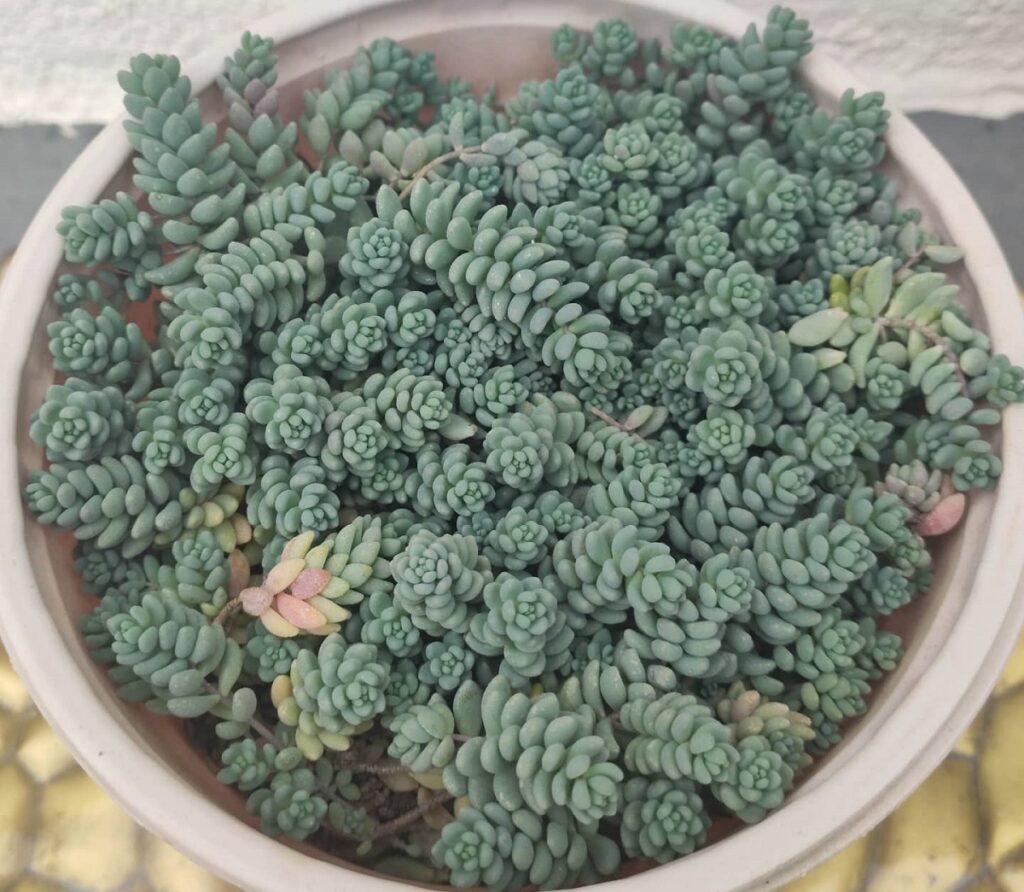Grow a Miniature Mat of Chubby Succulents – Sedum dasyphyllum
Get ready to be wowed by Sedum dasyphyllum – the cutest little succulent that forms a miniature mat of chubby, powdery grey-green or bluish-grey leaves. This low-growing perennial herb is an absolute dream for any garden or succulent collection. With clusters of white and pink striped star-shaped flowers dotted with black freckles on the petals, it puts on a charming summer show too! Once you learn how to nurture this easy-care plant, you’ll be addicted. Let’s dive into the delightfully simple world of growing Sedum dasyphyllum!

Contents
About Sedum Dasyphyllum
This pretty little stonecrop is quite the chameleon! A dwarf shrub by nature, it has weak, trailing stems that root as they sprawl along. The upright flowering branches reach just 3-5 inches tall when blooming. Its tightly packed leaves spiral around the stems in the cutest rosette patterns imaginable. These chunky, jelly-bean shaped leaves range from 1/8 to 1/4 inch long in hues of grey-green, blue-green and reddish tones. In cool weather, they blush with a lovely mauve overlay too.
The dainty flower clusters appear in early summer as lax sprays topped with pretty 5-petaled stars. While the petals are bright white, they’re often streaked with pink keels and have the most adorable speckled black dots in their centers! This variability and charm make Sedum dasyphyllum impossible to resist.
Now that your heart’s been captured, keep reading for all the tips on keeping this appealing little plant healthy and multiplying those irresistible leaf rosettes!

Related Post:
130+ Attractive Sedum Varieties With Pictures
Sedum Dasyphyllum Care Guide
Light Needs
Sedum dasyphyllum thrives in full sun locations with 6 or more hours of direct light daily. It can handle partial shade but really shows off best in sunnier spots. In hot climates, give it a little protection from intense afternoon rays. For indoor plants, set them in a sunny window or provide a grow light within 6 inches for 12-14 hours per day.
Watering Needs
This succulent has moderate water needs when actively growing. Water thoroughly once per week in spring through fall, allowing the soil to dry out completely between waterings. It may need more frequent watering in extreme heat or for pot-bound plants. Always make sure excess moisture can drain freely to prevent rot.
Newly planted Sedum dasyphyllum should be watered daily for the first 2 weeks while roots establish. Then transition to the standard weekly watering schedule. In winter dormancy, let the soil go fully dry before watering again.

Soil Preferences
Getting the soil mix right is key for healthy Sedum dasyphyllum. It needs a very well-draining medium made for succulents and cactus. An ideal blend is 60% succulent/cactus potting mix combined with 40% minerals like perlite, small lava rocks or crushed granite. This gritty, fast-draining mix mimics the plant’s preferred dry, rocky conditions while still holding some moisture. Never use dense potting soil alone.
Temperature and Humidity Preferences
These little guys are tough! Most varieties of Sedum dasyphyllum are cold hardy down to around 0°F (-18°C). Some can even withstand temps as low as -30°F (-34°C). They also handle summer heat and drought quite well. For indoor plants, maintain temperatures between 60-70°F (15-21°C) year-round. Anything below 50°F (10°C) will trigger dormancy.
Aim to keep indoor humidity around 40% or lower if possible. Use a portable dehumidifier or cooling fan as needed in muggy conditions. Increase airflow by grouping plants with space between them too.
Fertilizer Needs
Sedum dasyphyllum actually prefers lean, nutrient-poor conditions. Unless your soil is extremely depleted, it’s best to avoid fertilizers altogether. If feeding is needed, use an organic fertilizer at half-strength during the growing season or lightly top-dress with compost. Chemical fertilizers promote leggy, floppy growth on sedums.

Pests and Problems
Sedum dasyphyllum is quite resilient, but may experience issues with overwatering leading to rot, soil fungus or pests like mealybugs or aphids. The best defense is proper watering and well-draining soil. Check for any soggy or mushy patches and trim those away if rot occurs. Use insecticidal soap or neem oil for any pest infestations.
Pruning
Since Sedum dasyphyllum stays so low and compact, it rarely needs major pruning. However, you can neaten it up in early spring by removing any dead, damaged or stretched-out stems. This tidy-up encourages fresh, dense growth. Pinching back new growth in spring also promotes bushier shapes.
After flowering, leave the spent blooms in place over winter as they provide nice ornamental interest. For groundcover types, just trim any sprawling growth back to maintain boundaries if desired.
Potting and Repotting
Sedum dasyphyllum can be grown in containers or in the ground, rock gardens and even trailing over walls. When potting, choose unglazed clay or concrete containers with ample drainage holes. Terra cotta is ideal for allowing the soil to dry out properly.
Be sure to use the fast-draining succulent potting mix and don’t pot too deeply – just cover the bottom roots. Only up-pot to a slightly larger container when clearly potbound, as cramped roots encourage blooming.
How to Propagate Sedum Dasyphyllum
The easiest way to multiply these little cuties is through division or stem/leaf cuttings. You can also try growing from seed, but cuttings are faster.
For cuttings:
- Use a sharp, sterile knife or scissors to snip 2-3 inch stem tips with leaves
- Allow cuttings to dry for 2-3 days until calloused over
- Fill a well-draining container with succulent soil mix
- Plant cuttings into soil, gently firming the mix around the base
- Water sparingly until rooted in 2-4 weeks
Leaf propagation follows the same process – just let leaves callus over before pressing into soil.
For division:
- Carefully dig up the entire plant in early spring
- Gently pull apart into several rooted sections
- Replant each division, firming soil around the roots
- Water thoroughly after replanting
With Sedum dasyphyllum’s easy propagation, you’ll have plenty of these petite cuties to delight in and share! So grab your succulent potting mix, find a sunny spot, and add this charming miniature ground cover to your collection.
